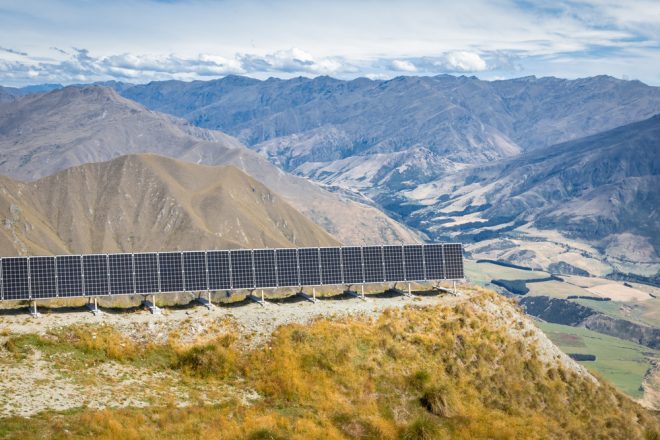配電会社のWEL Networks社と自然エネルギー開発会社のインフラテック(Infratec)社は、ニュージーランド初の実用規模の電池電力貯蔵システム(BESS)となるプロジェクトへの評価の、最終段階に入っています。
同国の29の配電事業体の一つであるWEL Networks社によると、ニュージーランド北島上部のワイカト地区における35MWのプロジェクトは、建設に向けて準備中であり、2022年10月までに試運転を開始する予定とのことです。
ニュージーランドは、2050年までにネットゼロ(温室効果ガスの排出量を実質ゼロにするという取り組み)を達成することを国の政策目標としています。WEL Networks社が言うには、ワイカトBESSは、より多くの再生可能エネルギーの導入や送電網への接続を可能にし、太陽光や風力エネルギーを蓄え、地域の電力供給の信頼性を強化し、需給の不均衡を是正するための迅速な予備を提供するなど、電力のバリューチェーン全体に貢献するよう設計されています。
WEL Networks社のCEOであるGarth Dibley氏によると、このプロジェクトの費用は約2,500万NZドル(1,766万米ドル)で、ニュージーランドの資源管理法に基づいて資源に関する同意を得ており、WEL社にとっては「大きな節目」となるとのことです。
「この技術は、再生可能エネルギーの導入を支援すると同時に、ネットワークの回復力を高めるものです」とディブリーは述べました。さらに、この電池は、電気自動車(EV)の充電をサポートし、太陽光発電のメリットを最大限に引き出し、グリッドの緊急時にバックアップを提供するものだと付け加えています。
インフラテック社の事業開発担当ゼネラルマネージャーであるNick Bibby氏は、35MW BESSの開発・納入にあたっては、国際的な電池開発の経験を生かしていくと述べました。
「地域社会に貢献するためには、電池をネットワークに組み込む必要があります。私たちは20年の寿命を持つ成熟した技術を選択したので、このバッテリーが今後数年にわたって、正当に話題になることを期待しています」とBibby氏は述べています。
インフラテックのBESSプロジェクトには、ニュージーランドでの商業・産業用バッテリープロジェクトや、トンガ、南クック諸島、ミクロネシア、ナウル、キリティマティなどの太平洋諸島での太陽電池+蓄電、マイクログリッドシステムなどがあります。
同社は、再生可能エネルギーの成長と揚水発電所を補完するため、また、ニュージーランドの北島と南島を結ぶ大規模な相互接続をバックアップするために、ニュージーランドでは大規模な蓄電池が早急に必要であると考えている、と述べています。




























































